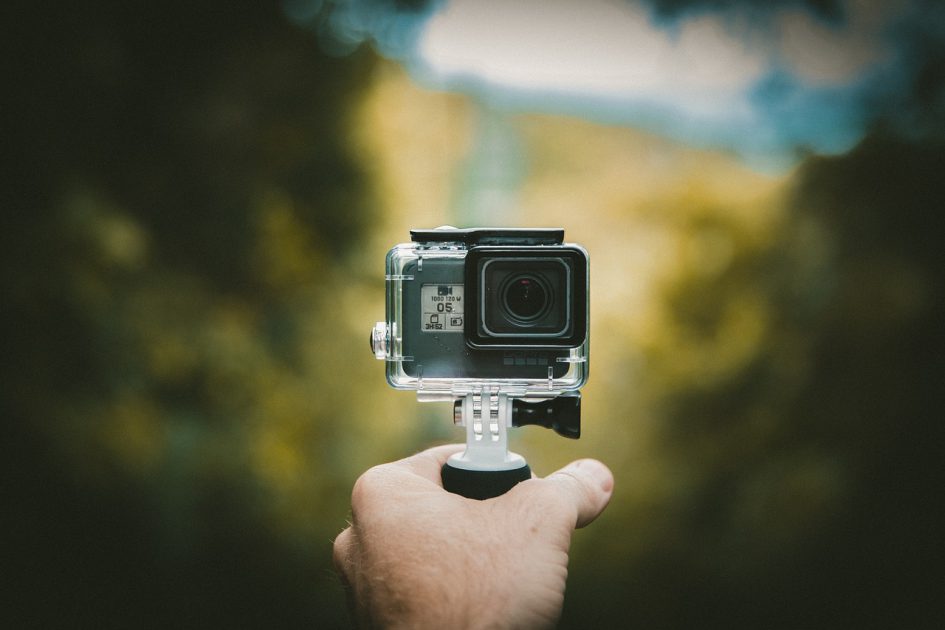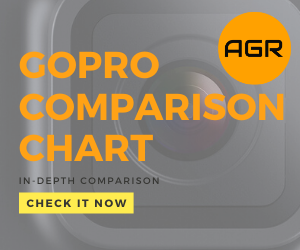An action camera is an indispensable digital partner when practicing winter sports or engaging in various outdoorsy adventures that’s why it’s important to know how to choose the best action camera for your requirements.
These cameras are much more durable in comparison with regular cameras and they can be used for a wide range of activities such as skiing, snowboarding, hunting, doing parkour, etc.
Capturing your exciting adventures on camera gives you the opportunity to preserve these great memories forever, not to mention that you can also post them on your favorite social media networks.
If you are new to action cameras, please continue reading this guide to learn how to buy a good one.
Before I start, here’s a short video showing some tips:
Video Quality and Frame Rates
Today’s action cameras are very sophisticated and they can film in large resolutions up to 5K (5120 × 2880 pixels).
This means that you get plenty of details into your video footage and you’ll be amazed by the quality of your video clip when you watch it on a large screen later on.
Apart from the 5K resolution which is usually available with high-end 360 degrees action cameras, you can also enjoy 4K resolution (3840 x 2160 pixels), Full HD (1920 x 1080 pixels) or HD resolution (1280 x 720 pixels).
The frame rate represents how many frames are shot each second and the standard frame rate for most cameras is 30fps (frames per second).
Some sophisticated devices can shoot up to 240 frames per second (allowing you to enjoy breathtaking slow-motion videos), but if you think that’s too much for you, shooting in 120fps or 60fps is also possible.
The frame rate is important because the higher it is, the smoother your video will be.
I have compiled a list of best action cameras for 2018, you might want to have a look.
Image Sensor and Photo Quality
The sensor is usually the most important element of your action camera. It can range from 12 up to 24 Megapixels or even more and it is responsible for shooting videos as well as still pictures.
The higher the Megapixel count, the more details are captured in your still photo.
Camera sensors are usually made by prestigious companies such as GoPro, Sony, etc and they might include image stabilization which is required to make your videos smooth as silk.
If you decide to go for 360-degree action cameras, these gadgets usually have multiple lenses to capture video footage and photo stills from all angles, stitching it up together internally.
Although such cameras are a little bit more expensive, they allow you to enjoy a completely new and unique video experience that will definitely thrill your friends or audience.
Controls and Apps
Most action cameras can be controlled via their touchscreen LCD display or they might come with physical push buttons which allow you to access its main functions.
However, if the action camera is really small and lightweight, it might not feature an LCD display and in this case, you can control it using your smartphone.
All that you have to do is to connect your camera with your iPhone or Android phone via an official app launched by the camera manufacturer and you’ll be ready to start/stop video recording, replay your video footage, share on social media, and so on.
It is worth mentioning here that sophisticated action cameras also include microphones which recognize vocal commands, so you can literally tell your camera what to do and it will carry on the task automatically.
Some cameras incorporate several microphones to record a stereo soundtrack for your video footage, but also to make recognizing your vocal commands more accurate and efficient.
Also, on some cameras like GoPro, you have the option to connect an external mic for a more smoother and better audio quality.
When you have your hands busy with the ski poles, controlling your camera with your voice can be a very useful feature.
Battery Life
An action camera usually features a 1,000mAh battery or something similar and this can be recharged, just like your phone’s battery.
If you shoot in high resolution and at a high frame rate, you might be able to record video footage for up to 30 or 60 minutes.
The lower the resolution and frame rate, the longer your videos will be. I have provided some tips on how to extend the battery life on your action cam, have a look.
Keep in mind that some manufacturers supply two rechargeable batteries in the package, so if one is dead when you’re out and about, you just replace it with the fully charged one and continue filming your adventures.
Connectivity
Most action cameras today come with multiple connectivity options. Let’s start with the good ol’ USB cable which allows you to transfer pictures and video files directly to your computer.
Newer models from reputable brands such as Garmin or GoPro come with a USB Type-C port which is much faster and more reliable.
You can also use the built-in Bluetooth or Wi-Fi connectivity to synchronize your camera with your smartphone, tablet or laptop and share video clips and pictures directly on your social media accounts.
High-end action cameras come with a 5GHz Wi-Fi connectivity which is lightning fast.

Memory
You are probably already aware that if you shoot in high resolution, the video footage will take up much more space in your camera’s memory.
The natural thing to do is to buy a memory card which can add up to 256GB or even 512GB of space to your device’s memory bank.
Most action cameras are already supplied with a decent memory card but don’t feel like you have to stick with it.
Buy a larger memory card if you shoot plenty of videos and pictures every day.
By the way, some action cameras already come with a few GBs of memory, but this usually gets filled quickly by shooting a couple of pictures or one long video.
To explore the full potential of your device, buy a memory card right from the start and in some cases, you might get discounts too.
Shape, Size, and Weight
If most smartphones tend to become larger and larger these days, action cameras, on the other hand, are shrinking at a rapid pace while becoming more and more sophisticated.
These little gadgets are usually very compact in size (smaller that your computer’s mouse), feature a rectangular shape and have a negligible weight of around 4 ounces.
The weight of the camera will be increased if you add a mounting option or if the battery is larger than usual, but you’ll never feel like you have a heavy item on your helmet while skiing and snowboarding.
Durability
Speaking of skiing and snowboarding, action cameras are designed right from the start to be more resistant to wear and tear.
These devices are used by people when they practice winter sports, go hunting or even while riding a motorcycle at 120mph.
They need to be tough, resilient and withstand heavy winds, ever-changing weather conditions, shocks, and vibrations.
That’s why manufacturers protect the delicate internal components such as the sensor and battery with housings made from durable materials such as steel or aluminum.
Since action cameras are also waterproofed (many of them without a housing), they feature rugged external coatings which prevent water from reaching the battery and the sensor areas.
When you buy an action camera, you are spending money on a very durable product, but protect your investment by adding a glass housing or case to it, to ensure that nothing will damage your precious device.
Mounting Options and Accessories
Manufacturers have devised a wide range of mounting options for your action camera.
The most popular one is a helmet mount which basically keeps your camera in place on your helmet, regardless of your speed, angle, and weather conditions.
This type of mounting option is very versatile and it can be used for action cameras of different sizes and shapes.
Another excellent option is the chest mount which looks like a harness and keeps the camera stable on your chest.
This allows you to capture video footage from your point of view and play with different zoom options and video settings.
Apart from mounting types, action cameras come with additional accessories such as special wide lenses, tripods, protective bags, and extra batteries.
When buying an action camera, make sure that you check out exactly what’s in the package to know what you’re paying for.
Price
You might be happy to find out that you don’t actually need to pay several hundred dollars for an action camera if you don’t want to.
Many shooting devices are more affordable and they provide you with an amazing video and photo experience.
You basically have two options – either go for a high-end camera from a big brand such as GoPro, Garmin, and Sony (which might cost up to $300-$500) or opt for a mid-range or budget model which costs between $50 and up to $200.
To make sure you get the best bang for your buck, check out the warranty provided by the manufacturer as well as the range of accessories included in the package.
To Conclude
Whether you’re powering down a mountain, going kayaking or sitting on top of mount Everest enjoying the view, an action camera will make your adventures live forever!
Take the aforementioned aspects into account, set a budget, set your priorities and you’re ready to make a great investment.
I hope you liked my guide on how to choose the best action camera. If you have any questions, then please leave a comment below and I will get back to you as soon as I can.







Leave a Reply